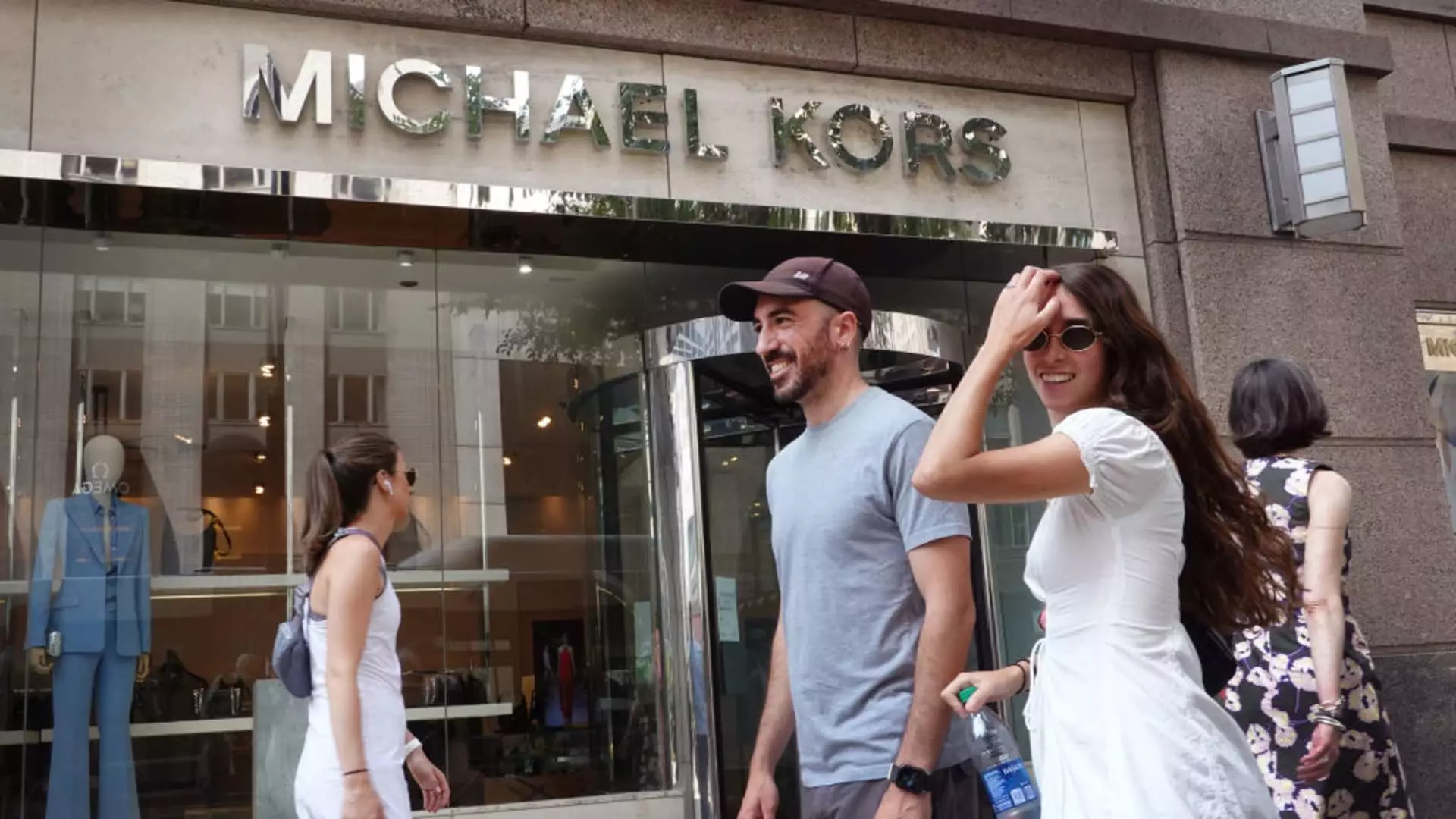The announced cessation of the merger between Capri Holding and Tapestry Inc. marks a pivotal moment in the luxury fashion sector. Recently, the Federal Trade Commission (FTC) successfully initiated legal action to obstruct what was poised to be an $8.5 billion merger between two of America’s prominent luxury houses. Citing concerns over reduced consumer benefits and employee impacts, the FTC’s intervention led both companies to reassess their proposed union.
In a mutual decision announced Thursday, both companies acknowledged that pursuing regulatory approval for the merger was no longer tenable. Capri CEO John Idol emphasized the move’s potential benefits, indicating that the companies would benefit from shifting focus on their individual growth trajectories. Given that the merger was originally unveiled in August 2023, expectations had risen regarding what a unification of Tapestry’s well-known brands—Coach, Kate Spade, and Stuart Weitzman—alongside Capri’s luxury stalwarts—Versace, Jimmy Choo, and Michael Kors—could achieve. However, regulatory challenges loomed large, and the timeframe until February’s expiry of the agreement forced a re-evaluation.
The FTC’s opposition, triggered by arguments detailing the merger’s potential to harm the competitive landscape, culminated in a federal judge’s ruling that favored the regulatory body. Following this judicial decision, Tapestry indicated possible appeals but ultimately found the financial implications too significant to ignore. Reports suggest that Wall Street analysts had begun viewing this potential merger skeptically, pointing to an expected overvaluation of Capri, compounded by ongoing declines in Capri’s business performance.
In the immediate aftermath of the court ruling, shares for Capri endured a marked decline of approximately 50%, while Tapestry’s stock flourished, climbing around 10%. Following the announcement of the merger’s termination, Tapestry’s stock prices surged upward by over 7% in pre-market trading, highlighting Wall Street’s shifting sentiment towards the two companies.
Interestingly, Tapestry included terms within their merger agreement that specified a compensation plan for Capri in the event that the merger failed to secure approvals. Tapestry expressed its intention to reimburse Capri approximately $45 million, a relationship-building gesture that contrasts with the often adversarial nature of corporate mergers and acquisitions.
The financial strategy from Tapestry emphasizes confidence in its independent growth. CEO Joanne Crevoiserat underscored her belief in alternative avenues for expansion, affirming a commitment to organic growth strategies. She signaled plans to leverage freed-up cash towards a $2 billion stock repurchase, illustrating confidence in the company’s own financial health without the burdens of a drawn-out merger process.
As Capri prepares to address its strategic priorities, especially in revitalizing the Michael Kors brand, there are indications that the company may be laying the groundwork for a more robust recovery. Idol’s assurances about the brand’s future signal a commitment to strategic initiatives that can enhance desirability and consumer engagement across its offerings. Capri is reportedly adopting comprehensive approaches that include innovative marketing strategies and improvements to product availability through an omni-channel strategy.
On the flip side, Tapestry’s focus appears directed towards consolidating its existing brands while aggressively pursuing new growth opportunities. The company’s strategy against a backdrop of the integration failure suggests that they view their brand portfolio as resilient enough to thrive independently.
The dissolution of the Capri-Tapestry merger serves as a reminder of the unpredictable nature of corporate mergers within the highly scrutinized luxury industry, where consumer interests and regulatory perspectives often shape the landscape. Both companies now stand at a crossroads, with Capri focusing on recovery and brand enhancement, while Tapestry continues to innovate and expand within its established framework.
As the luxury market evolves, leaders in the sector must remain agile, adapting to market demands and regulatory landscapes while maintaining strong brand identities. The future remains uncertain, yet the lessons learned from the Capri-Tapestry merger are clear: securing growth requires not only ambition but also a keen understanding of market dynamics and consumer preferences.

